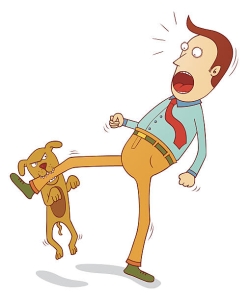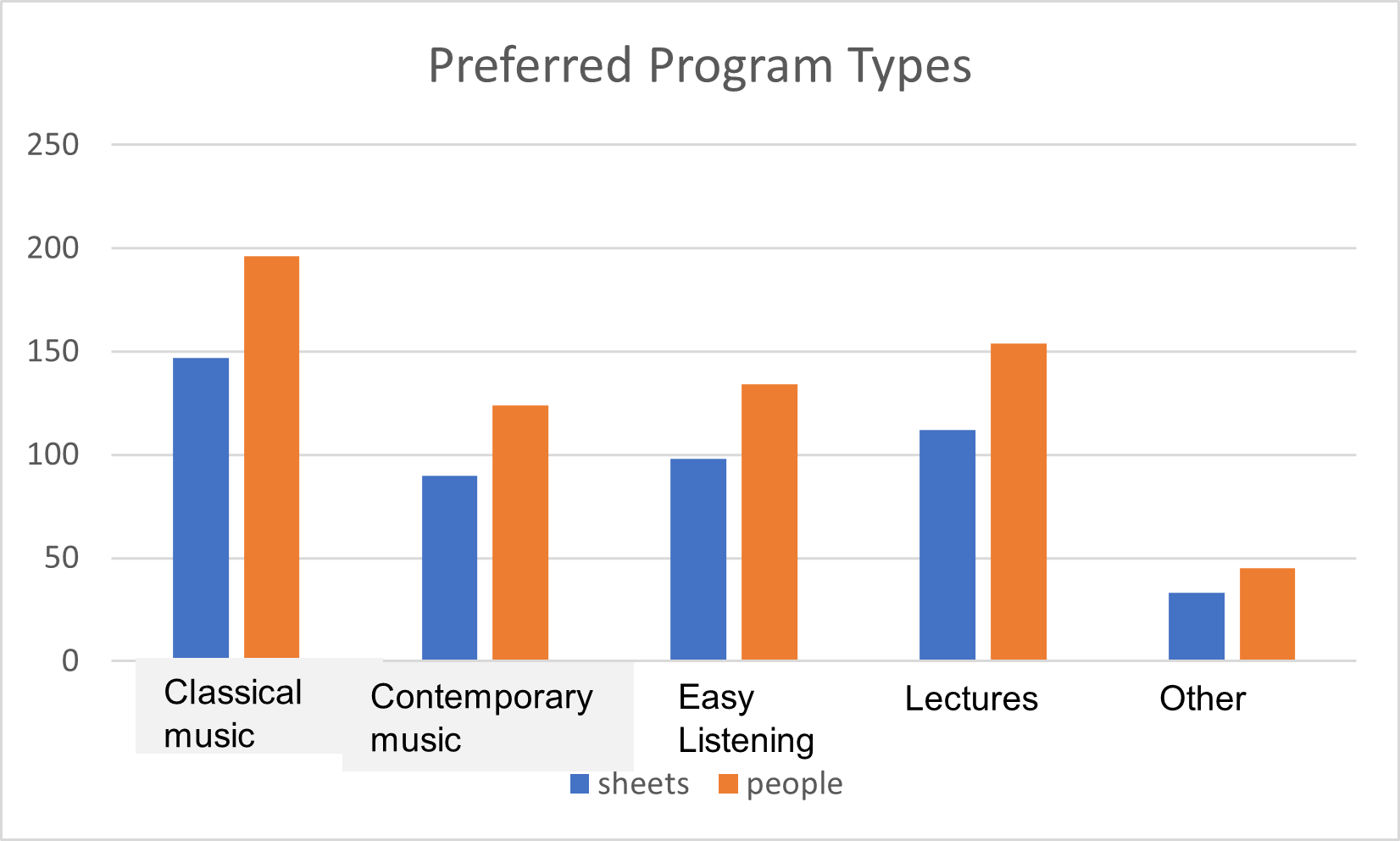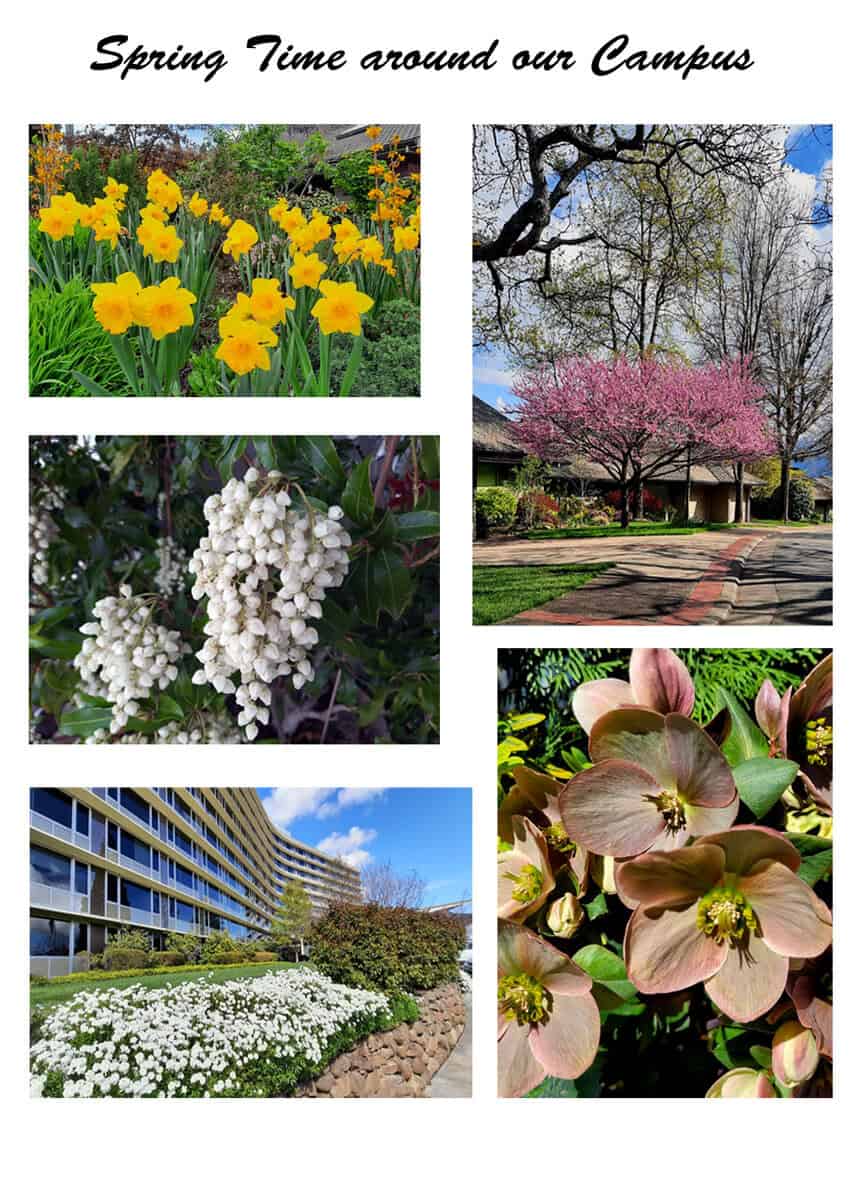A Local Perspective on Climate Action
by Bob Buddemeier
[Material in italics are editorial comments inserted into the report.]
On Nov 14, RVM resident Steve Harris interviewed Alan Journet and Kathy Conway, founders and Board members of SOCAN (Southern Oregon Climate Action Network, https://socan.eco). This presentation to an RVM audience was part of the “Discussions With…” program series organized by Father Joel, Steve Harris and Laura Monczynski. The series is intended to promote educational engagement with community leaders to bring attention to the controversial issues that are drawing attention in our community. Topics so far have included issues related to homelessness, marijuana, and climate change, with additional sessions planned for the future.
This article is therefore a serendipitous companion piece to the “Green goes to Portland…” article, which describes an RVM Green Team trip to a meeting to build connections with a consortium of Green Teams from six Portland-area CCRCs, all focused on Climate Resilience. The events were independent, but both oriented to the same issues (Climate Change) in similar settings (CCRCs in Oregon).
In response to Steve’s opening question, Alan outlined his progression from college biology and ecology teacher to community climate organizer. In the process, he raised the point that the science of climate change is diverse and complex. Alan said that he had spent a long time studying the various subjects (e.g. marine and atmospheric sciences, geology, biogeochemistry, etc.), had decided that the science was credible, and that his responsibility was to educate people beyond the college classroom.
Later in the program he returned to the question of the multiple disciplines involved in Climate Change science. Alan remarked that there are many different kinds of evidence for climate change, and all point the same conclusion — that humans have been affecting the carbon cycle and the chemical composition of the atmosphere at least since the industrial revolution.
Steve initiated discussion of the effects of climate change with his personal observation that the number of “hot spell” days (>100oF) had increased. Alan answered that he had worked with data from the local NOAA office, and found that over the past 20 years the average annual number of 100o days had increased from 7 to 12, although the annual count is variable, with some years >20. He said that the trend is upward, and will remain so, and he wished that temperature variations were reported relative to the past trend rather than the past average.
Turning to the relationship between severe weather and climate, Alan observed that elevated temperatures provided the energy that fueled the rapid formation of high-intensity hurricanes, the increased atmospheric moisture that created floods, and the severe droughts that set the stage for wildfires. As long as warming trends persist, we can expect that the frequency and intensity of extreme events will continue to increase.
In response to Steve’s question about a scientific consensus that we are headed for 2.1oC, Alan replied that we need to hold the global temperature increase to 1.5oC (2.7oF) to limit damage, but we are clearly headed for much higher values, and for ecosystem destruction. He interjected that in the early days of climate projection, the scenario of fastest temperature increase was called the Worst Case, but after it was recognized that this was actually the path that temperature increase was following, it was renamed the Business As Usual (BAU) scenario.
Discussion turned to convincing people that carbon budget accounting needed to be done. Alan said that “money in – money out” was no longer the only accounting that needed to be done; “carbon in — carbon out” is also a critical balance to assess for business, industrial and agricultural activities.
Dealing with climate deniers or disbelievers received a good deal of attention. Alan cited the Yale Program on Climate Change Communication as having found that the most effective persuasion is by friends and relatives – but these people are relatively unlikely to talk about climate change. Finding some kind of common ground is important for discussion – perhaps a desire to leave a habitable planet for our children.
Alan related some tragicomic anecdotes about attempts to inform recalcitrant deniers, ending with a brief story about James Inhof (former OK senator), who thought the climate change hypothesis was correct on first reading of the scientific basis, but changed his mind after discovering how expensive it was going to be to cope with it. Alan also told of being asked if climate change was just a natural process, to which he had replied “I hope not; if humans caused it, they may be able to control it.”
[Comments: (1) The emphasis on dealing with denial in the RVM presentation stands in contrast to the experience at the Portland meeting. In my Portland breakout group I asked how the other Green Teams dealt with opposition to climate related action, and it turned out that nobody else considered it an issue—their institutions were accepting/supportive of the activities. (2) The question of cost vs climate seems to me a major issue; as climate change has become better understood and documented, opposition to action is more often based on expense or uncertainty than on claimed inadequacies in the science.]
The question of what individuals can do, now and in the future, was addressed by Kathy Conway. In addition to monitoring lifestyle and purchases to minimize transportation costs, plastic usage, and environmentally exploitive products, she stressed the central role of beef as a particularly climate-unfriendly food product because it is a major source of methane (a powerful greenhouse gas) from the ruminant digestive processes. Reducing beef consumption is a practical and economical option available to most meat-eaters.
[Closing observations:
Marketing: one lesson that can be inferred from the success of the ongoing broad and well supported actions of the Portland Consortium is that the climate-related environmental commitment represents an opportunity to do well by doing good – that the presence of these activities is a positive marketing factor, potentially attracting not those who agree, but also those who are generally inclined toward community service.
Extended Community building: Our experience in Portland was that the Consortium members were reaching out to establish links both with other retirement communities and with like-minded community organizations. RVM is at a different stage in the processes, but the Discussion presentations represent encouragement for outreach and cooperation, and the Green Team’s growing connection with the Climate Resilience theme of the Consortium sets the stage for further outreach and collaboration.]
MANOR MART SPECIAL!
MANOR MART IS OPEN IN ITS NEW LOCATION!
Ground Floor of the Manor in the former Club Room

AND TO CLELBRATE: 10% OFF ON ALL ICE CREAM OCT 28 – NOV 1 ONLY!
Come on in and get acquainted — Alicia Aldridge, Mgr
The Word Nerd on Articles
by Connie Kent
We have indefinite and definite articles. Generally, we use an indefinite article (a, an) to refer to any old whatever it is (a dog, a pillow, an octopus).  We use the definite article (the or that) to refer to a specific whatever. For example, “The dog bit me” (the one right over there); the pillow (the one I use every night); that octopus (the one you can hardly see because it blends in with its background).
We use the definite article (the or that) to refer to a specific whatever. For example, “The dog bit me” (the one right over there); the pillow (the one I use every night); that octopus (the one you can hardly see because it blends in with its background).
Idiomatic Use
But some uses don’t follow the general rules. These exceptions are idiomatic; that is, there’s no explanation. That’s just how we speak. You may not even be aware of these irregularities.
None. We don’t use articles at all before some nouns. For example, names of sports, such as football. For example, “He played football in high school,” unless we’re referring to a specific game, such as the football game last night. No articles before proper nouns, such as the names of businesses (such as Amazon). And we don’t use articles before names of courses, such as chemistry or economics or English – again, unless we refer to a particular class. For example, I don’t like English. But I do like the English class taught by Ms. Kent.
Sometimes yes, sometimes no. You go to bed, to school, to bed, to sleep. But you go to the library. If you’re American, you go to the hospital. (If you’re British or Canadian, you go to hospital – no article). Back in the U.S., you go to the police station, to the hardware store, or to the grocery store. If you intend to point to a particular grocery store, however, it’s the Albertson’s on North Phoenix Road (as opposed to the one off West Main).
Some curiosities. One tells a lie, but the truth.
We might travel to Canada or Mexico, but we go to the Netherlands, or to the Philippines.
We might climb Mt. McLoughlin (or, for the less ambitious, Roxy Ann Peak). But we climb the Matterhorn, the Eiger.
THE SHOW MUST GO ON!
By Bob Buddemeier and Anne Newins
And indeed, the show has gone on – under the leadership of Mary Jane Morrison, the Program Committee has put on more than 60 performances in both of the last two years. Programs must be scheduled many months in advance due to the popularity of our performers. The programs are constrained by the budget provided by the Residents Council. The programs occur almost every Thursday evening, on some Tuesdays, and occasionally on holidays or special events. Over the past 6 months, attendance has averaged about 75 people per evening, and sometimes exceeds 100 for some events.
Although pleased with this level of success, the Committee would like to diversify and expand the offerings and further increase attendance. In order to guide further developments, a survey of residents was recently conducted.
A total of 592 survey sheets were distributed, one to each Independent Living mailbox. Returns totaled 207, or about 35% — a very good response for a survey. Recipients were asked whether the response represented one or two people; the total number of people sampled was 284, or about a third of the Independent Living residents.
The strong response indicates a high level of interest, and the replies will provide a basis for program modifications once they have been analyzed and discussed by the Committee. Since many of the suggestions and requests go beyond the normal operations of the Program Committee or may not be possible in the auditorium, the results have been shared with the Community Engagement Department.
Although detailed review of the results has just begun, several points stand out about why people do not attend the programs. One of the major reasons was that many people do not want to go out in the evening after a busy day. However, transportation issues were also significant, with parking problems and mobility limitations frequently noted.
In the communication section, nearly a quarter of the respondents did not indicate any internet or computer-based means of learning about the programs; this issue will be explored to see if there are other ways that residents can be informed about upcoming programs. However, one update that is being implemented immediately is establishment of an email list of people who want to receive personal notices and reminders. If you did not request this on the survey form, you can join the list by sending a message that says Program List to openinforvm@gmail.com .
Finally, a finding that is at once encouraging and challenging – types of programs preferred. The figure below summarizes the response. People were free to select as many as they wished, and the average per person was more than two types.

The diversity of responses validates the Committee’s practice of scheduling a variety of programming but complicates decisions about overall program modifications.
One of the surprises was the number of people expressing an interest in lectures – a program type that has not been featured very often. The Committee will consider ways of adding more lectures in the future. Most people did not indicate what subjects they wanted for lectures, so it seems likely that a wide variety would be needed.
Overall, it seems that the Program Committee is successful enough to make major improvements a challenge – which is not that bad a problem to have. Review and planning have just begun – stand by for further developments.
Nit Wit Newz: February 2024
(Nit Wit Newz is an unauthorized, often unreliable, on-line news service designed to keep residents abreast of the inconsequential, unverified, and trifling events that dramatically shape and inform our everyday lives here at Rogue Valley Manor.)
A BRIEF, SOMETIMES FACTUAL, HISTORY OF THE ROGUE VALLEY
(And Its Storied Manor)
Not just once, but twice upon a time—many, many years ago—King Harold the Good, leading a band of fierce but—when you got to know them—lovable warriors, stormed the villainous rogues that had unlawfully occupied Barneburg Hill. While the king’s first thrust to recapture his hill was beaten back, the second wave proved successful. Barneburg Hill was once again his. His subjects, the hill-side villagers, were no longer under the iron fist of the rogues. The evil rogues were unceremoniously routed.
Vanquished, the surviving rogues fled the hill showing no regard for the 15 mph speed limit, nor the collaterally damaged wild turkeys who were slow-poking their way down the center of the hill’s streets.
All the king’s horses and all the king’s men followed the fleeing rogues in fevered pursuit. The chase went down Shannon Drive to Rogue Valley Manor Drive and on to Ellendale—where it spills into Barnett.
There, the beleaguered rogues got lucky. The signal at Ellendale, which, everyone knows, only rarely turns to green, did just that. The rogues made it through. The trailing king’s men didn’t—the signal had flashed red. Unwilling to risk an expensive traffic ticket, they stopped. The chase was over. The rogues had escaped into the fertile valley that lies just below Barneburg Hill.
Stymied, the king’s men turned and rode back up their newly reclaimed hill. Disappointed at their inability to smite all of the rogues, they, nonetheless, were heartened by the knowledge that the hill was now returned to its rightful owner, their king.
Upon their arrival atop Barneburg, they were greeted triumphantly by the village hill-siders, who were now returning to their badly damaged homes that had been seized and ransacked by the rogues .
The villagers were pleased to be beyond the grip of the marauding rogue horde. But, it must be said, not all were pleased to see the rogues go. Liaisons between some of the fetching village maidens and the younger rogue men were not, it seems, uncommon.
Meanwhile, on Barneburg, King Harold the Good began drawing up plans for his recent hill top real estate re-acquisition. It was clear, new housing for his people was needed. A high-rise building towering over the valley below was the answer. It would not only quarter his needy subjects, it would also be a useful sentinel to foresee any rogue counter-insurgency that might develop in the future. Work begin immediately.
At the same time, in the valley, the rogues, too, were developing plans for the future. Badly thrashed in their expulsion from the hill and now weary of their previous wicked ways, they turned to a new leader (their previous leader the evil, Boris the Bad, had been felled by a rare, terminal case of nervous leg syndrome).
That new leader would be David. A friendly, peaceful sort, David convinced the rogues that they should heed the biblical imperative to “beat their swords into plowshares.” “This barren, but fertile, valley,” he proclaimed, “is exactly where such a transformation should take place.”
The rogues embraced their new leader’s vision. And so it came to pass that the land was transformed into a fruited plain of some significance. Pear trees blossomed and bore fruit throughout the rogue’s valley—now know as the Rogue Valley.
During this transformation, however, several of the younger rogues, in an effort to re-kindle their flickering old flames on the “hill,” would pack a few of their superbly luscious pears and, late at night, surreptitiously, steal their way into the newly completed high rise on the hill.
Using make-shift entry fobs to get through the locked main door, from there, it did not take them long to find their former sweeties.
Pears, as it turned out, were the perfect gift. Their sweet, succulence had become valued throughout the entire valley.
The fruit found welcoming hands. The young rogue swains found welcoming arms.
Other than those few comely maidens favored by the rogues, King Harold’s subjects, because of the long, simmering feud, were the only ones in the entire valley unable to enjoy the delectable fruit. Without those pears, it was not long until the Manor dwellers would grow restive. Rogue Valley pears were desirable.
Unwilling to barter with his former foes for their fruit, King Harold dedicated an entire hillside street devoted to growing pear trees. He deemed it, Peartree Lane. Sadly, the young trees shriveled and died before they reached maturity. The hillside soil, it turned out, was incapable of sustaining the fruit trees.
Thus thwarted, the king knew that the rising trouble astir among his pear-deprived minions must be quelled. Against his better judgment, he decided to reach out to his old enemy, the evil Boris (he was unaware of Boris’s demise). To his surprise, he found their new leader—friendly David. And, indeed, David proved to be just that—friendly.
A successful negotiation ensued. The king needed pears and was willing to pay. Dave, realizing that the Manor account would be their largest in the entire valley, enthusiastically agreed to the deal.
The startling sequence of events that followed is best revealed in the headlines from old, contemporaneous issues of,“hillTOPICS,” a lurid tabloid at the time.
KING HAROLD THE GOOD ABDICATES!
Popular Monarch Vacates Throne. Names No Successor.
Autocracy Out. Democracy In.
—————–
FORMER SOVEREIGN BEQUEATHS HIGH-RISE TO NON-PROFIT ORG.
Stately Barneburg Hill Building to be Converted to Swank Senior Community.
—————–
EX-ROYAL, HAROLD, OPTS FOR COMMON MAN STATUS
Says, “Just Call me, Harry”
——————–
CROWN DENIER AND PEAR CZAR INK HISTORIC PACT
Former Foes Now Fast Friends and Business Partners.
Plan to Gift Pack Pears for Worldwide Sales
——————–
PEAR PAIR PARTNERSHIP PROVES PROFITABLE
Next: Plan High-End Retail Store on Center Drive.
Store to Feature Pears and Moose Munch.
And so, dear history fans—lo those many years ago—that is how harmony, bliss, and prosperity swept across a large swath of southern Oregon.
Perfection, however, continues to remain elusive.
To this day, sauntering turkeys continue to bedevil drivers on Barneburg Hill; Peartree Lane is still absent a single pear tree; that capricious signal at Barnett only occasionally yields to autos backed up on Ellendale; and the Manor grapples to find a fair, monthly food plan to feed its residents.
Alas, our story ends near, but just shy of—happily ever after.
—A. Looney
What’s New in November
Interested in previous issues? Go to the News & Views page or the Arts & Info page. Scroll to the bottom of the page. In the center is a “Load More” link. Click this to display past articles.
NEWS & VIEWS
2023 Crafts Fair Preview, by Connie Kent with photos by Reina Lopez
Traveling the Challenged Way, by Joni Johnson
Tom’s Beard and Other Information You Don’t Want to Know about Wild Turkeys, by Robert Mumby
Senior Solitude – AN ESSAY, by Bob Buddemeier
ARTS & ENTERTAINMENT
NIT WIT NEWZ – November 2023, by A. Looney
Stone Art, by Cathy Fitzpatrick – photo collage by Reina Lopez
Greeting Cards, by Eleanor Lippman
Why English is Hard to Learn, by Connie Kent
November in the Library: Perspectives on Aging, by Anne Newins
Events & Opportunities
Concerts and Performances November- December 2023, submitted by Mary Jane Morrison
Classes, Games, and Events submitted by Sarah Karnatz
in Big, Borrowed, or Both
3550: the Portland Mirabella quarterly magazine (most recent issue) Click Here
Mirabella Monthly, Newsletter of the Seattle Mirabella (November issue) Click Here
Test Post #475 Testing Out New Site-Wide Styles
New Site-Wide Styles In Post Heading 1 Same as the Page Title
And this is simply paragraph text…
Lorem ipsum dolor sit amet, consectetur adipiscing elit. Donec varius, orci eu pulvinar placerat, sem purus auctor purus, vel aliquet nunc odio id nulla. Sed laoreet porta facilisis. Suspendisse eu lorem turpis.
Something You Said – This is Heading 2
Maecenas commodo purus volutpat ultricies luctus. Maecenas et erat volutpat, rhoncus dolor nec, mollis nulla. Donec egestas euismod risus, in aliquam risus ultricies sit amet. This is bold text. Aenean sit amet fringilla ipsum. Nullam malesuada et risus ac scelerisque. Nunc in arcu libero.
You can use a blockquote for a quote or to make text stand out See Below – This is Heading 3
Vivamus porttitor tortor ut urna ornare, vitae blandit magna laoreet. Ut laoreet finibus est, at bibendum risus gravida ut. Nam ullamcorper sagittis lectus, vitae faucibus felis molestie condimentum. Maecenas sollicitudin ligula et mauris ullamcorper, feugiat placerat velit pellentesque. Donec condimentum malesuada gravida.
Cras id congue ante. Mauris tincidunt felis at commodo consequat. Mauris finibus dolor libero, nec viverra enim vehicula rutrum. Donec ac eleifend ante, at efficitur orci. Curabitur vel iaculis mauris. Praesent in erat eget metus porta semper consectetur ut lacus. Etiam fermentum interdum dictum. Vestibulum in vulputate felis, vitae iaculis elit. Here is a link. Nullam consectetur risus eget iaculis laoreet. Curabitur pulvinar maximus nisi, sit amet facilisis mi sodales sit amet. Vestibulum auctor non dui id pretium. Nullam posuere, lectus eget pellentesque fringilla, felis neque vestibulum leo, vel tempus nibh ante vitae tellus.
This is Italic. The bottom paragraph is italic too!
Vivamus porttitor tortor ut urna ornare, vitae blandit magna laoreet. Ut laoreet finibus est, at bibendum risus gravida ut. Nam ullamcorper sagittis lectus, vitae faucibus felis molestie condimentum. Here is another link. Maecenas sollicitudin ligula et mauris ullamcorper, feugiat placerat velit pellentesque. Donec condimentum malesuada gravida. Curabitur tincidunt interdum aliquet. Duis malesuada ullamcorper leo, in iaculis nibh vehicula ac. And more bold text.
Quisque lectus nulla, pulvinar at rhoncus id, semper non turpis. Fusce a massa eu dui gravida luctus. Sed eget elementum justo, et feugiat ante. Vestibulum pellentesque tristique pellentesque. Integer fringilla et metus sit amet pellentesque. Maecenas euismod sagittis interdum.



